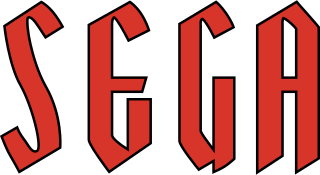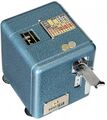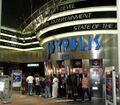Difference between revisions of "Sega logo"
From Sega Retro
Lukdriver14 (talk | contribs) m (→Others) |
(→Others) |
||
| Line 44: | Line 44: | ||
Grandstand sega logo.svg|Logo used with the release of the [[SG-1000]] in New Zealand (1983) | Grandstand sega logo.svg|Logo used with the release of the [[SG-1000]] in New Zealand (1983) | ||
Sega logo HK.png|Chinese variant (世嘉), used briefly in Hong Kong during the [[Sega Master System]]'s lifespan. | Sega logo HK.png|Chinese variant (世嘉), used briefly in Hong Kong during the [[Sega Master System]]'s lifespan. | ||
| − | Sega logo Arabic. | + | Sega logo Arabic.png|Arabic variant used in instructions. |
</gallery> | </gallery> | ||
Revision as of 06:46, 18 August 2019
As with most big corporations, Sega uses a logo so that people can associate a product with the Sega brand.
Contents
1945? logo
Variants of the original Service Games used a typical, hand-drawn logo as was often the style for the 1940s. This pre-dates modern views on "branding" so likely just existed to bring consistency to the company's letterheads.
Examples of usage
195x logo
Sega's first easily reproducible and standardised logo came into force during the late 1950s. Its exact date of creation is unknown, however early examples of its use include the Mini-Sega slot machine (thought to be released in 1958) and the Sega 1000 jukebox from 1960.
This logo is typically red, and is thought to be using a unique typeface invented by Sega. The height of the letters seems to vary.
Examples of usage
1976 logo
At some point in 1976, Sega adopted what their current logo - a blue wordmark, sometimes sporting a white border.
As with previous logos, the true design origins are unknown, however the '76 logo is thought to derive from the Yagi Double typeface, developed by Robert Trogman and published by his Los Angeles-based design company FotoStar in 1968. Yagi Double, alongside many of Trogman's typefaces, was widely used during the 1970s - another famous example of its use is the current logo for US broadcaster CNN.
Modifications were made to the typeface for Sega's purposes. The "E" is elongated and the "G" is squared off to more closely match the E. The "A" would also see modications, becoming thinner as the decade came to a close. These modifications were loosely enforced during the early years - some third-party distributors of Sega products (as well as the early days of Sega Electronics) simply opted for the standard Yagi Double font, with often mixed results. While there have been slight tweaks to the shape over the decades, the logo has remained largely consistent since the early 1980s.
By the time Sega had entered the home console business in 1983, almost all occurances of the logo were printed in blue (aside from when printed in monochrome). Prior to this date it was not unusual, particularly in North America, to see the logo in red, similar to the previous design, and on occasion yellow variants would also be used in arcade flyers and cabinets.
Examples of usage
Sonic the Hedgehog (1991)
Tokyo Joypolis (1996)
Others
Mysterious 1960s logo used on Punching Bag (1962) and other material
Logo used with the release of the SG-1000 in New Zealand (1983)
Chinese variant (世嘉), used briefly in Hong Kong during the Sega Master System's lifespan.
References
| Sega, the company |
|---|
| Company profiles | Harmony | History | Jingle | Scream | Logo | Offices | Souzou wa Inochi | Wakai Chikara |
| Annual reports | Investor relations |








